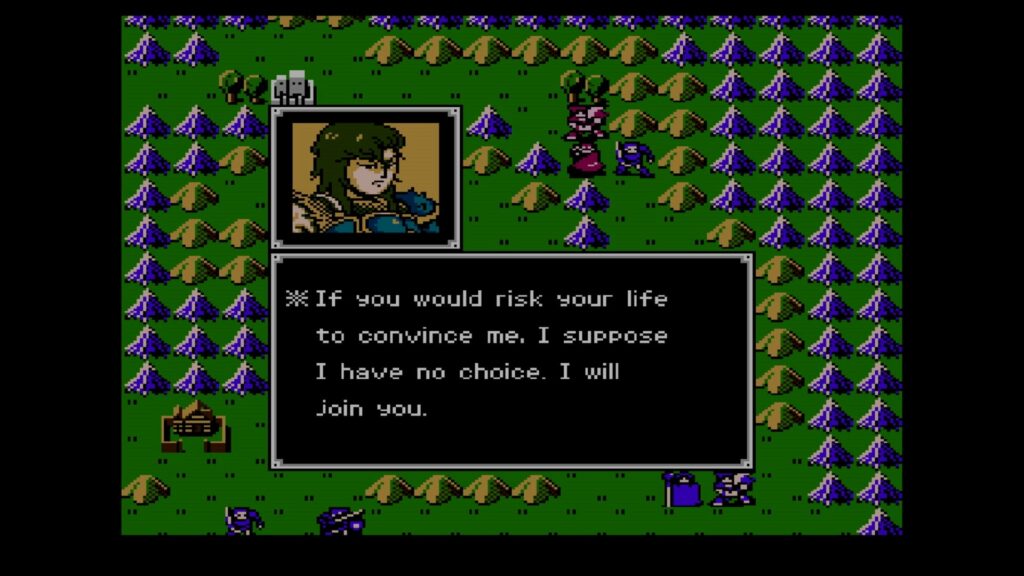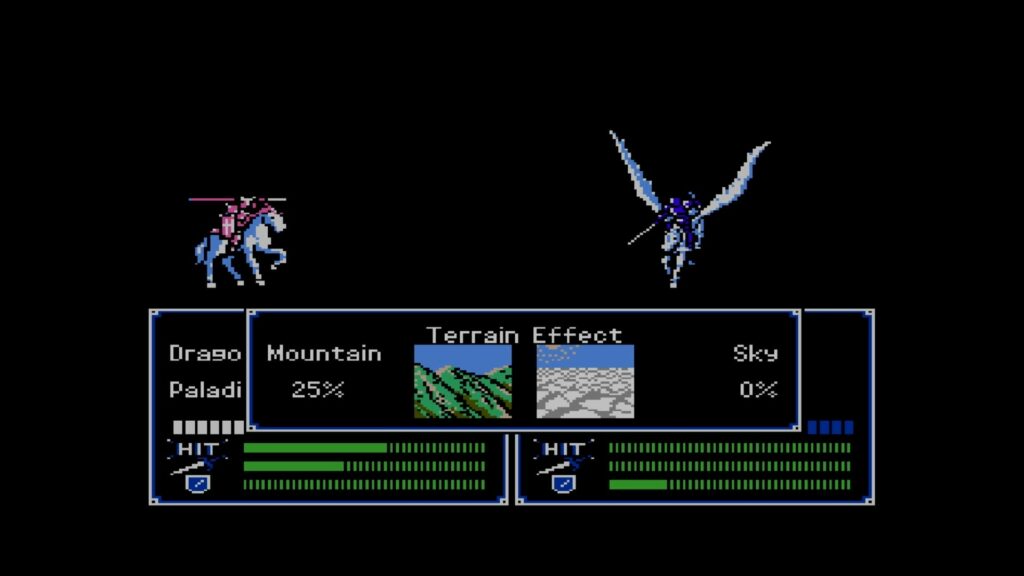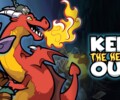
Developer: Intelligent Systems
Publisher: Nintendo
Platform: Switch
Tested on: Switch
Fire Emblem: Shadow Dragon and the Blade of Light – Review
It’s been 30 years since the Fire Emblem series made its debut on the Famicom, and Nintendo has finally localised the first game in the series for an English-speaking audience. There’s probably a record in there somewhere, having three decades between a Japanese and a Western release, but we were eager to dive into this slice of video game history nonetheless. This new edition of Fire Emblem: Shadow Dragon and the Blade of Light promises new features, but is the title worth picking up separately for these, or should the game have just been added to the NES Online subscription service?
Story
In all honesty, though this is the first time Shadow Dragon and the Blade of Light has been officially localized, there have been other ways to experience the story. This wasn’t only possible through fan translations of the original, but 2008’s Fire Emblem: Shadow Dragon for the DS offered an enhanced retelling of Marth’s tale. Marth was of course introduced to players in the West through Smash Bros Melee, but he didn’t feature in a game of his own over here until the launch of the aforementioned DS title. Shadow Dragon and the Blade of Light documents Marth’s attempt to reclaim the throne of Althea, after the titular shadow dragon, Medeus, sends Marth into exile with the aid of the evil sorcerer Gharnef. The story here is told in the most rudimentary way possible, which makes sense given that cutscenes didn’t exist yet in the Famicom era, but the story is actually way deeper and more elaborate than what the actual game provides you with.
Graphics
Shadow Dragon and the Blade of Light’s graphics are of course representative of what a Famicom title looked like back in 1990. There is little individuality in the designs of the sprites, with the tile-based overworld maps all looking very similar, having a very limited colour palette. Battle scenes show basic sprites with limited animation duking it out against a black background and character portraits shown alongside dialogues are crude and a bit wonky. There is a certain charm to these old school graphics and it serves to show how far we’ve come in thirty years. One thing we noticed was how dark and washed out the colours looked compared to screenshots of the original Japanese version. This is apparently something caused by the emulator the Switch uses to run the game, and we felt a bit disappointed that the rerelease doesn’t accurately display the more saturated hues of the original.
Sound
Music has always been a strong suit of the Fire Emblem series. Yuka Tsujiyoko’s main theme for the series especially has cemented its legacy as a fantastic piece of video game music. It’s impressive how recognisable the tune is when you first boot up the game, given the limitations of the original hardware. The quality of the OST isn’t limited to the main theme either, as Shadow Dragon and the Blade of Light features some of the best and catchiest 8-bit music out there. We were a bit disappointed to hear that the music follows suit when playing the game at increased speed, as it messes up the tunes, and we would’ve preferred the option to keep the music playing at the regular speed at all times.
Gameplay
As the first entry in the series, Shadow Dragon and the Blade of Light laid the foundation for the tactical turn-based strategy gameplay that Fire Emblem would become known for. The core gameplay might not be as elaborate as the modern titles, but beneath the primitive exterior beats the same heart. For the uninitiated, Fire Emblem’s gameplay is all about building up a warband of powerful warriors and taking them to the battlefield in a series of increasingly difficult turn-based battles on a grid-based map. While the majority of the enemies you face are nameless grunts, your own troops are defined by their individual personalities as well as how they are involved with the story.
Series mainstays like weapon ranks and permadeath are all present, but for every one of these features, there are other elements that hadn’t been introduced to the series yet when this title debuted 30 years ago. Things like movement range overlays, hit percentages and easy inventory management are sorely missing and make for an experience that isn’t very enjoyable by today’s standards. That isn’t to say that Shadow Dragon and the Blade of Light is a bad game by itself. There is a reason that Marth’s adventure kickstarted a franchise that reaches an audience of millions of players worldwide thirty years later.
The big issue here is simply that the game has aged poorly. Taking actions feels tedious, and navigating through the game’s menus is confusing and often counterintuitive. At the risk of sounding like an old fart here, there is a reason games came with physical manuals back in the day. Shadow Dragon and the Blade of Light lacks the luxury of having a manual and we can imagine that players that go in blind will feel overwhelmed when figuring out what to do with the limited amount of information provided in-game. Series veterans might find this a less challenging barrier to overcome, as things make sense if you’re familiar with the context of the game. Nintendo tried to make the game more accessible to modern-day audiences by introducing new QoL features, including the possibilities to speed up the game, rewind turns and bookmark map states so that you can reload when things go awry. While these are welcome additions, we feel that these are ultimately unnecessary additions that were thrown in to justify the localisation being sold separately rather than included in the Switch Online membership.
Conclusion
If you’re one of the many fans that joined the series with 2012’s 3DS title Fire Emblem: Awakening (or any of the titles after that), you might not find Shadow Dragon and the Blade of Light your cup of tea, as the series didn’t put as much emphasis on fleshing out character relationships and a lot of features that have since become staples are missing. While this rerelease is worth a look at if you’re a diehard Fire Emblem fan or a retro game enthusiast, the truth is that the game hasn’t stood the test of time. Given that Shadow Dragon and the Blade of Light isn’t the best way to experience Marth’s tale, we regret saying that this a Fire Emblem title that is probably best skipped. Fire Emblem may not be a franchise up there with the likes of Mario and Zelda, but we still feel that the series deserved a more suitable celebration of its 30th anniversary.
Fire Emblem: Shadow Dragon and the Blade of Light - Review,3 Comments
Leave a Reply
You must be logged in to post a comment.









[…] death is a possibility at any moment”, we were expecting the game to be very similar to the Fire Emblem series. What we got, however, was far closer to a cross between Heroes of Might & Magic and […]
[…] we delve into Dark Deity, a quick disclaimer: we’re going to be mentioning Fire Emblem quite a bit in this review, for a very simple reason. Dark Deity is a game that takes a ridiculous […]
[…] conversations that build relationships. A blue-haired protagonist. No, we’re not talking about Fire Emblem, although it’s very clear that developer Dancing Dragon Games was inspired by the GBA-era titles […]